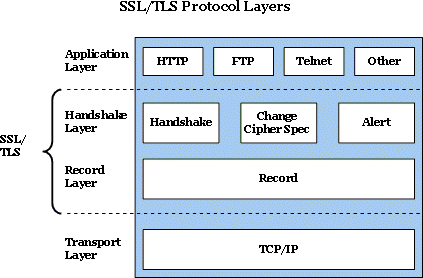Want to learn what version of OpenSSL you have?
- DigitalOcean Droplets are Linux-based virtual machines (VMs) that run on top of virtualized hardware. Each Droplet you create is a new server you can use, either standalone.
- Google; About Google; Privacy; Terms.
- The OpenSSL for Linux is a collaborative effort to develop a robust, commercial grade, and Open Source toolkit implementing the Secure Sockets Layer (SSL v2/v3).
- OpenSSL for OSX 0.9.5a is a third party application that provides additional functionality to OS X system and enjoys a popularity among Mac users. However, instead of installing it by dragging its icon to the Application folder, uninstalling OpenSSL for OSX 0.9.5a may need you to do more than a simple drag-and-drop to the Trash.
OpenSSL is an open-source cryptographic library and SSL toolkit. The applications contained in the library help create a secure communication environment for computer networks.
OpenSSL provides support for the TLS and SSL protocols, and also includes various tools used in cryptography. Note that OpenSSL is officially available only as source, so you must manually compile and install the software on your Mac. Deploy the OpenSSL toolkit via the command line.
OpenSSL contains an implementation of SSL and TLS protocols, meaning that most servers and HTTPS websites use its resources.
In this tutorial, learn how to find the OpenSSL version with a single command.
- A command-line/terminal window.
- OpenSSL installed on your system.
The openssl version command allows you to determine the version your system is currently using. This information is useful if you want to find out if a particular feature is available, verify whether a security threat affects your system, or perhaps report a bug. Type in:
The resulting data will consist of the OpenSSL version designation and the date of its initial release.
The output is clear and easy to understand. We can break down the version format to get valuable insight. Additionally, using flags can help structure the data.
The format of the version provides a lot of information. The position of the numbers represent the release type:

- Major Releases – You can recognize a major release if one or both of the first two digits change. This type of release can break compatibility with previous versions. For example: 1.1.0g vs. 1.2.0
- Minor Releases – A minor release changes the last number of the version designation, e.g., 1.1.0 vs. 1.1.1. These releases are likely to contain new features; however, they should not break binary compatibility. You do not need to recompile applications to benefit from them.
- Letter Releases – The release designation in our example 1.1.0g contains bug and security fixes exclusively. No new features were added.
Note: The next planned version of OpenSSL is 3.0.0. Once the new version is released, the versioning scheme is going to change to a more contemporary format: MAJOR.MINOR.PATCH
By using a general flag –help we can see an overview of all valid options for openssl version.
There are eight (8) valid options that allow you to narrow your search. The option that provides the most comprehensive set of information is:
Openssl Tool For Mac
This command compiles all the information contained under the individual flags into a single output.
This option is convenient, especially when troubleshooting or composing a bug report.
The OPENSSLDIR line is especially interesting, as it will tell you where OpenSSL will look for its configurations and certificates. You can print out that specific line by using the following command:
In this example, the configuration files and certificates are located at /usr/lib/ssl
Now you have learned how to check the OpenSSL version.
You should now understand how to interpret that data. And how it can be used to improve server security, troubleshoot or submit a bug request.
The flags presented in the article provided you with the necessary tools to help you make an informed decision and administer your system effectively.
Next you should also read
Build Openssl For Mac
Initially developed by Netscape in 1994 to support the internet’s e-commerce capabilities, Secure Socket…
Install Openssl For Mac
A Certificate Signing Request (CSR) is the first step in setting up an SSL Certificate on your website. An…
Are you running into the ERR_SSL_VERSION_OR_CIPHER_MISMATCH error? This error happens in a user’s browser…
Learn how to obtain and install SSL Certificates on Apache CentOS 7. The article explains how to use an…